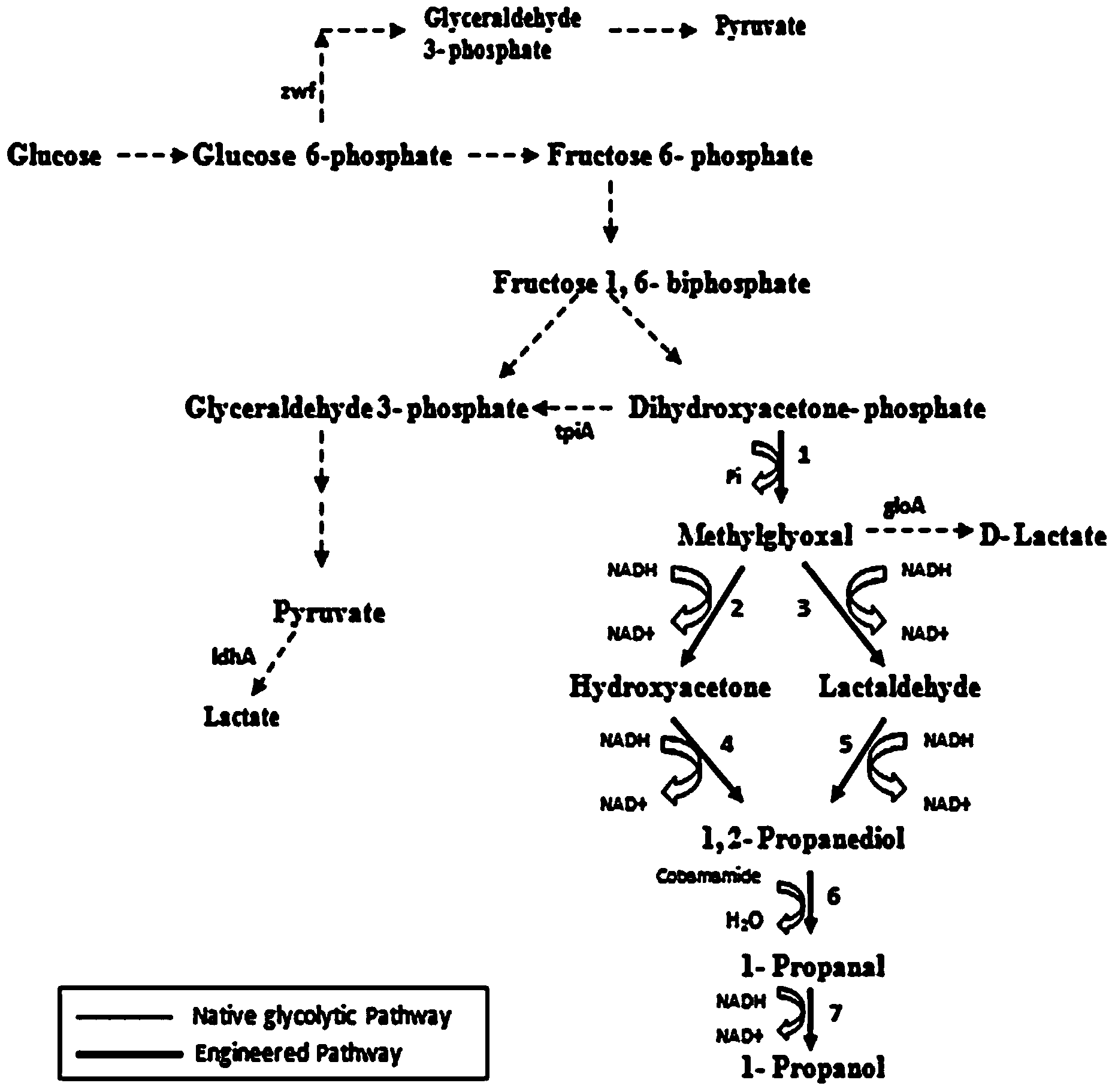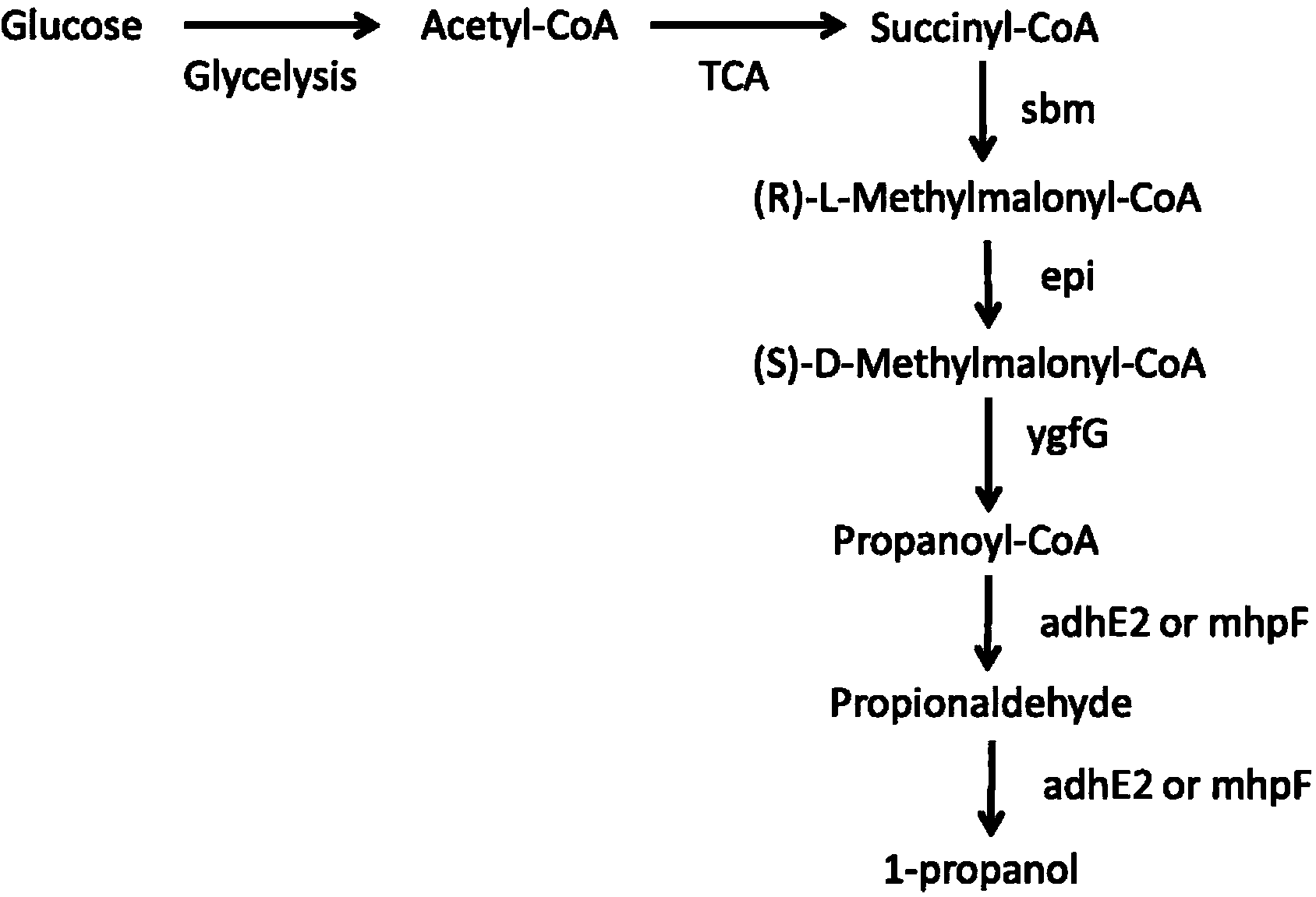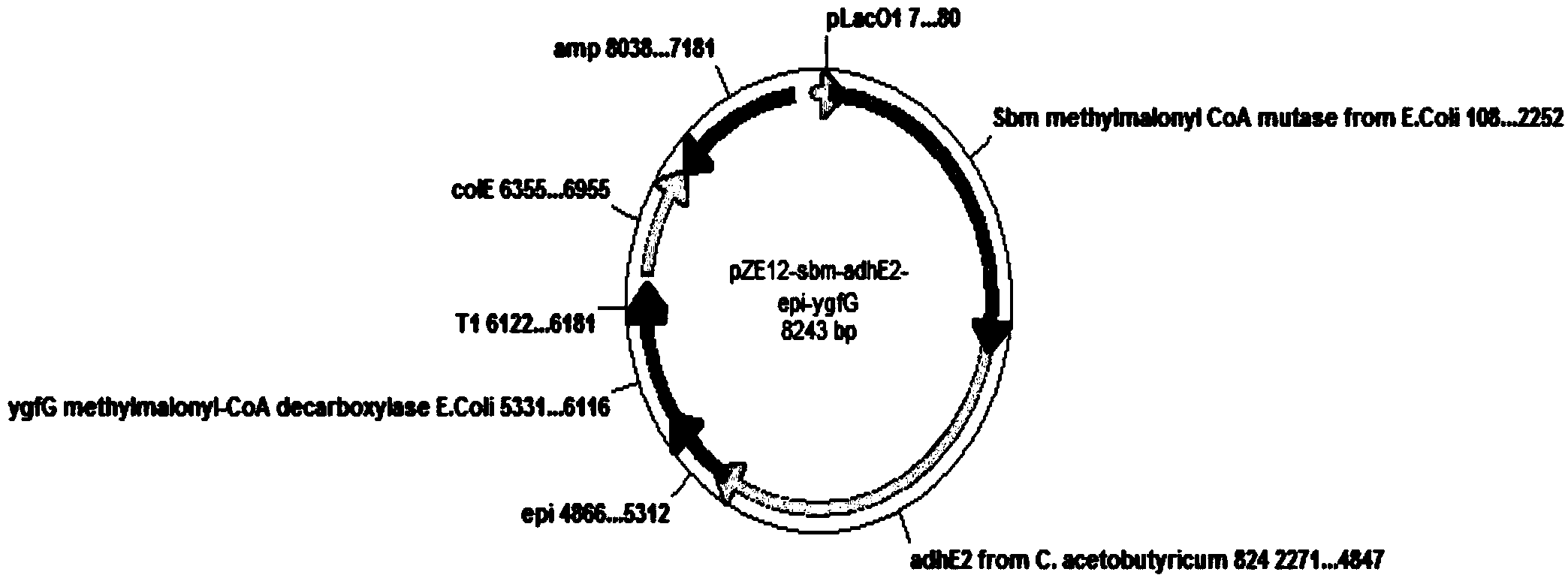1-propyl-alcohol production microorganism introducing heterologous metabolic pathway and method for producing 1-propyl-alcohol by means of microorganism
A production method and a technology of a metabolic pathway, which are applied in the field of efficient production of 1-propanol, can solve the problems such as the inability to synthesize a large amount of downstream products and the limitation of the yield of the target product.
- Summary
- Abstract
- Description
- Claims
- Application Information
AI Technical Summary
Problems solved by technology
Method used
Image
Examples
specific Embodiment 1
[0021] Construction of 1-propanol-producing microorganisms
[0022] The genome of Fusobacterium acetobutylicum (C. acetobutylicum ATCC824) was extracted, primers were designed, and PCR was carried out to obtain the gene adhE2 encoding alcohol dehydrogenase (Alcohol dehydrogenase). The genome of P. shermanii is extracted, primers are designed, and PCR is carried out to obtain the gene epi encoding methylmalonyl-CoA isomerase (Methylmalonyl-CoA epimerase). Extract the genome of Escherichia coli (E.coli), design primers, and perform PCR to obtain the gene Sbm encoding methylmalonyl-CoA mutase (Methylmalonyl CoA mutase), which encodes methylmalonyl-CoA decarboxylase (Methylmalonyl-CoA decarboxylase) -CoA decarboxylase) gene ygfG and gene mhpF encoding acetaldehyde dehydrogenase 2 (Acetaldehyde dehydrogenase2). These five genes (divided into two groups) were respectively connected with the digested pZE12 to obtain the connection solution for use.
[0023] Preparation of heat-shoc...
specific Embodiment 2
[0036] Fermentative production of 1-propanol-producing microorganisms
[0037] Pick a single colony on the plate of Escherichia coli genetically engineered bacteria, culture it overnight in a test tube containing 3mL LB medium at 37°C and 250rpm, take 1% bacterial suspension in the next morning, and inoculate it in a test tube containing 10mL M9 medium In a 125mL infusion bottle, cultivate for 7hrs, add 4μL of 50mM IPTG to induce, then culture for 48hrs, remove oxygen, anaerobic fermentation, and take samples at 24hrs and 48hrs after induction.
[0038] The preliminary fermentation results showed that in wild-type E. coli BW25113, two plasmids SXL66 and SXL67 were fermented in M9 medium and a very small amount of 1-propanol was obtained. On this basis, we carried out subsequent fermentation experiments. According to literature reports, GL medium is often used to ferment and produce 1-propanol. This is because the metabolic pathways constructed by previous people often use keto...
specific Embodiment 3
[0040] Knockout of the lactate metabolic pathway in 1-propanol-producing microorganisms
[0041] Carry out P1 transduction to target microorganism, the method is as follows: 1, prepare P1 bacteriolysis solution: (1) pick single colony on the plate of E. ) Prepare 5 mL of LB medium, including 100 μL of 50% (mass volume ratio) glucose, 125 μL of 1M CaCl 2 ; Add 1% overnight cultured bacterium solution, 37 ℃, 250rpm culture 90min; (3) the culture solution is divided into two test tubes, 3 μ L of phage (Phage) is added in one test tube, and the other test tube is a blank control; (4) Incubate at 37°C and 250rpm for about 1 hour; (5) Add 20μL chloroform and mix vigorously and quickly; (6) Centrifuge at 4000rpm and 4°C for 10min; (6) Transfer the supernatant to a clean 1.5mL centrifuge tube, then add 25μL chloroform Mix well and store at 4°C for later use. 2. Transduction: (1) Pick a single colony of the strain to be transduced, and culture it in a test tube of 3 mL LB medium at 3...
PUM
 Login to View More
Login to View More Abstract
Description
Claims
Application Information
 Login to View More
Login to View More - R&D
- Intellectual Property
- Life Sciences
- Materials
- Tech Scout
- Unparalleled Data Quality
- Higher Quality Content
- 60% Fewer Hallucinations
Browse by: Latest US Patents, China's latest patents, Technical Efficacy Thesaurus, Application Domain, Technology Topic, Popular Technical Reports.
© 2025 PatSnap. All rights reserved.Legal|Privacy policy|Modern Slavery Act Transparency Statement|Sitemap|About US| Contact US: help@patsnap.com



